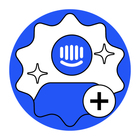I've noticed that carousels (the automatic ones, meaning one controlled by our marketing team triggered based off user properties) render in our android app before app loading is completed. When app loading does complete, they dismiss themselves. So, they become basically unusable.
We use the react native SDK.
I didn't see any methods that I could use to control the lifecycle to disable it until app loading has completed. I don't want to have to rely on programmatically launching them since it kind of limits our growth team's capabilities.
Any recommendations? I know that there’s a way to manually show articles by using the ID, but I’d love to be able to use this out-of-the-box platform-y set up that can enable our marketing team to use articles without engineering’s involvement.
Haven’t been able to figure out from the documentation whether there’s a way to control the lifecycle.




